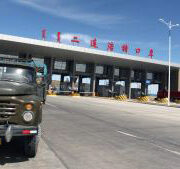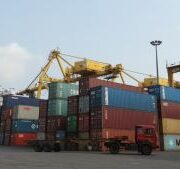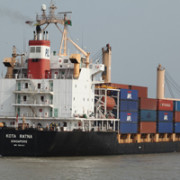Tag Archives | Trans-Pacific Partnership
Industry and trade, Regional cooperation and integration
 Industry and trade, Regional cooperation and integration
Industry and trade, Regional cooperation and integration
 Industry and trade
Industry and trade
 Industry and trade
Industry and trade

TPP and RCEP – friends not foes

Talks just concluded in Auckland, New Zealand on Saturday show that plans for the Regional Comprehensive Economic Partnership (RCEP) are advancing. Just as both Hillary Clinton and Donald Trump, the next potential leaders of the Trans-Pacific Partnership’s (TPP) biggest partner—the US—have distanced themselves from the agreement. Some even suggest that the US Congress won’t ratify the TPP agreement, and warn that the world economy risks US isolationism.
RCEP – a life raft for trade liberalization in Asia

There seems to be a pushback against trade agreements in the post global financial crisis era. The Trans-Pacific Partnership (TPP) was signed in early 2016, but US presidential candidates have spared no effort criticizing it so near-term ratification is highly uncertain. The WTO Doha Round is in the deep freeze after 14 years of negotiations. Unilateral trade liberalization has virtually come to a standstill.
TPP as inspiration for the 10th WTO Ministerial Conference in Nairobi?

At the beginning of October, 12 Pacific Rim countries agreed on the Trans-Pacific Partnership (TPP) agreement. The TPP agreement has been hailed as a landmark trade pact, as it includes many issues that have so far not found their way into the rule of law in the multilateral trading system. As a reaction to the successful deal, World Trade Organization (WTO) Director-General Roberto Azevêdo announced that the TPP “will serve as an inspiration for WTO members” for the forthcoming 10th Ministerial Conference in Nairobi, Kenya. In this article, I argue that neither the process of TPP talks nor the content of the TPP agreement can provide a positive stimulus for the Doha Development Agenda (DDA) negotiations.
Minimizing Asian losses from the TTIP: A European view

Like the Trans-Pacific Partnership, the Regional Comprehensive Economic Partnership, and the Free Trade Area of the Asia-Pacific, the Transatlantic Trade and Investment Partnership (TTIP) between the European Union (EU) and the United States (US) is a second-best approach to trade and investment liberalization compared to a global agreement. A global agreement is not within reach, and thus Asia, as a non-beneficiary, will incur trade losses similar to the losses that Europe would incur as a non-beneficiary of an Asia-Pacific agreement on free trade.


Search
Subscribe / Connect to Asia Pathways
Subjects
- Agriculture and natural resources
- Blog
- Capacity development
- Climate change
- Economics
- Education
- Energy
- Environment
- Finance sector development
- Gender
- Governance and public sector management
- Health
- Industry and trade
- Information and Communications Technology
- Infrastructure
- Miscellaneous
- Population
- Poverty
- Private sector development
- Regional cooperation and integration
- Sanitation
- Social development and protection
- Transport
- Uncategorized
- Urban development
- Video Blog
- Water
Recent Posts
- Artificial intelligence: A new driver for inclusive growth and development?
- Increasing trust in cross-border e-commerce and artificial intelligence
- Enhancing access to maternal and newborn healthcare in developing Asia
- Can electric vehicles lead the way to a sustainable future?
- Mitigating climate-related sovereign risk to accelerate action on the climate emergency




Recent Comments